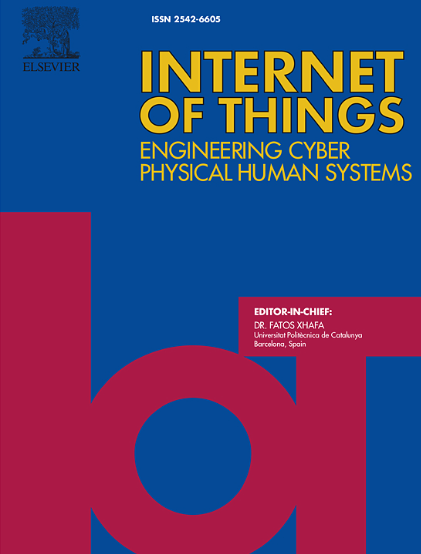基于边缘的物理资产和数字孪生虚拟化框架,支持认知数字孪生
IF 6
3区 计算机科学
Q1 COMPUTER SCIENCE, INFORMATION SYSTEMS
引用次数: 0
摘要
在网络物理系统(CPS)中,设备依靠物联网(IoT)协议与智能应用进行交互,传输来自监控物理资产(PA)的传感器读数。应用程序支持构成数字孪生(DT)的映射机制,以模拟实际 PA 的行为。PA 的变化在 DT 中得到反映,反之亦然。这种二元性使得认知数字孪生(CDT)得以创建,其中 PA 生成的读数可提取知识,通过 PA 上的人工智能模型支持执行。本文介绍了一种通用的 PA 和 DT 虚拟化(PDV)框架,该框架利用互联网工程任务组的分层架构,通过应用层智能子层从 PA 和 DT 之间的交互中学习,从而实现基于边缘的 CDT 支持。虽然该框架与所考虑的 CPS 无关,但本文的重点是工业 5.0 应用。在此背景下,本文提出了一种新的物联网协议,以实现 PDV 方案,即使在存在不同程度的无线网络层损伤的情况下,也能可靠地自动处理 PA 和 DT 之间的交互。本文章由计算机程序翻译,如有差异,请以英文原文为准。
Edge-based physical asset and digital twin virtualization framework to support cognitive digital twins
In Cyber-Physical Systems (CPSs), devices interact with smart applications by relying on Internet of Things (IoT) protocols to transmit sensor readings from monitoring Physical Assets (PAs). The applications support mapping mechanisms that constitute Digital Twins (DTs) to mimic the behavior of the actual PAs. Changes in PAs are mirrored in the DTs, and vice versa. This duality enables the creation of Cognitive Digital Twins (CDTs), where the readings generated by PAs enable the extraction of knowledge to support actuation through AI models on the PAs. This paper introduces a generic PA and DT Virtualization (PDV) framework that leverages the Internet Engineering Task Force layered architecture through an application layer smart sublayer that learns from the interaction between PAs and DTs to enable edge-based CDT support. Although this framework is agnostic of the CPS under consideration, its focus in this paper is on Industry 5.0 applications. In this context, a new IoT protocol is proposed to enable a PDV scheme that provides the reliable automation of the interaction between PAs and DTs even in the presence of different levels of wireless network layer impairments.
求助全文
通过发布文献求助,成功后即可免费获取论文全文。
去求助
来源期刊

Internet of Things
Multiple-
CiteScore
3.60
自引率
5.10%
发文量
115
审稿时长
37 days
期刊介绍:
Internet of Things; Engineering Cyber Physical Human Systems is a comprehensive journal encouraging cross collaboration between researchers, engineers and practitioners in the field of IoT & Cyber Physical Human Systems. The journal offers a unique platform to exchange scientific information on the entire breadth of technology, science, and societal applications of the IoT.
The journal will place a high priority on timely publication, and provide a home for high quality.
Furthermore, IOT is interested in publishing topical Special Issues on any aspect of IOT.
 求助内容:
求助内容: 应助结果提醒方式:
应助结果提醒方式:


